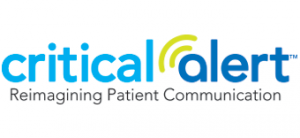Elmhurst Memorial Healthcare
Centralized Nurse Call Triage – How Just A Few Operators Can Respond To Every Patient Request in Seconds
Bed Size: 282
Deployment Timeframe: 4 Months
Integrations: Mobile/Beds/RTLS/ADT
Key Decision Factors for Adoption of Critical Alert
When Elmhurst Memorial Healthcare began planning for its new 886,000-square-foot Main Campus, improving the patient experience was a top priority. Overall, the hospital had a goal to create a less intimidating and more comforting healthcare experience for patients and their families. A key element to their success would be a nurse call system that enabled staff to quickly and effectively respond to patient requests for both medical and non-medical needs.
Elmhurst Memorial Hospital was operating multiple nurse call (also referred to as “call light”) systems throughout its original facility. Over time, the various systems became a challenge to maintain and provided little flexibility for integration. A goal for the New Main Campus was to install a single system that could provide a superior patient experience as well as meet the needs of diverse internal stakeholders.
“In addition to improving patient satisfaction and alignment with our new environment and processes, we wanted to be able to mine, capture and analyze call light system data to support our focus on continual improvement,” said Jean Lydon, Associate Vice President, Patient Care Services, Elmhurst Memorial Hospital. “We were looking for a system that could provide relevant data to hospital administration and finance, as well as to our nursing and medical teams. And, it had to meet the requirements of our IT and facilities departments.”
“The first thing that struck us was how quiet it was on the floor. Critical Alert’s centralized system had virtually eliminated the alarms, buzzers and overhead paging associated with most call light systems. Patient requests were quickly answered and triaged by dedicated operators. Those same operators were able to send requests directly to the appropriate caregiver’s communication device and monitor request fulfillment.”
“The first thing that struck us was how quiet it was on the floor. Critical Alert’s centralized system had virtually eliminated the alarms, buzzers and overhead paging associated with most call light systems. Patient requests were quickly answered and triaged by dedicated operators. Those same operators were able to send requests directly to the appropriate caregiver’s communication device and monitor request fulfillment.”

